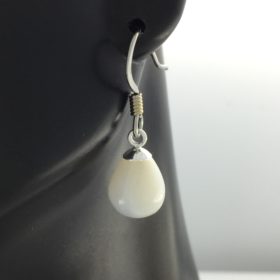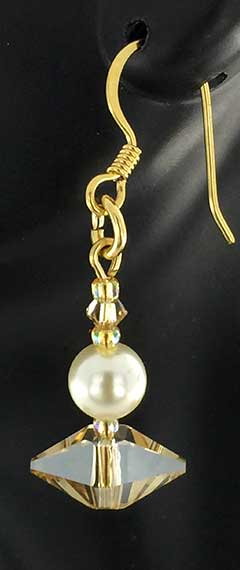Articles
How Can You Tell If Jewelry Is Allergy Free? (New Guide)
 Allergy Free, Yes or No?
Allergy Free, Yes or No?
People with nickel sensitivities often ask: How can you tell if jewelry is allergy free? With the prevalence of jewelry allergies, the terms “hypoallergenic” and “nickel-free” get heard often in marketing nowadays. To protect people, the European Union placed restrictions on the sale of jewelry containing nickel. They also regulate the claims and words used to stop deceptive ads. In other countries, the term “nickel free” can be used freely, and is not subject to regulations. How can you be sure that the jewelry is allergy free to the point where it will not give you problems?
What Causes Earring Allergies?
Allergies to jewelry are relatively common and cause many people to avoid wearing earrings altogether, or limit their selection. Fortunately, taking extreme measures such as this is not necessary. There are many hypoallergenic jewelry options available, especially with increasing awareness about metal allergies. An allergic reaction arises as a result of crystal-like flakes of the metal penetrating the skin after the metal gets wet, especially through perspiration. The result may be itching or red dots or swelling and extreme discomfort. The main cause of many metal allergies is “available nickel”. That means that the nickel exists loosely alloyed in the metal and touches the skin. Nickel in stainless steel is “tightly bound”. So, although present, the skin doesn’t react to it.
The Problem with Nickel
A large proportion of metal allergies are specifically to nickel, the material used most often in jewelry making because of its durability and low price. Those with nickel allergies may want to avoid cheaper types of jewelry, such as earrings that are available for a few dollars at bargain retailers. In addition, avoid costume jewelry and second-hand earrings, because they often contain large amounts of nickel. People with allergies should examine items carefully before purchasing them and to determine whether earrings are silver or silver plated. A plated item has base metals underneath which are likely to contain nickel. The question then becomes how much nickel and how available on the surface.
Precious Metal Jewelry Might Not Be Allergy-Free
Those searching for hypoallergenic jewelry may prefer purer alloys and high-quality precious metals. These tend to be more expensive and often offer no guarantee that the item is allergy-free. Even valuable varieties of gold may contain a portion of brass, copper and nickel. Those with less pronounced symptoms may avoid discomfort when they put on 14 karat gold earrings, even if there may be nickel in them. Others may wear silver, platinum or palladium comfortably in purer forms. However, for those who are highly sensitive to nickel, the skin may react if there is more than a small amount of the metal present.
Stainless steel is a popular affordable metal used in hypoallergenic jewelry, and it is often thought to be allergy-free. One way of looking at it would be to use the term “virtually” nickel free. Some types of hypoallergenic earrings may contain nickel, but the metal exists in a form that, on a molecular level, suppresses the expression of certain qualities that give rise to allergic reaction. Therefore, there is nickel present, but it is not “available.”
One tool people with metal allergies use is a kit to test for certain metals. Statements made by shops and websites that items test as allergy-free may actually mean the nickel does not show up on the test and does not cause allergies. This is an honest assessment. Customers can also confirm the results at home with a metal test kit. The kit contains small bottles of solution that can be rubbed onto jewelry and produces prompt results.

